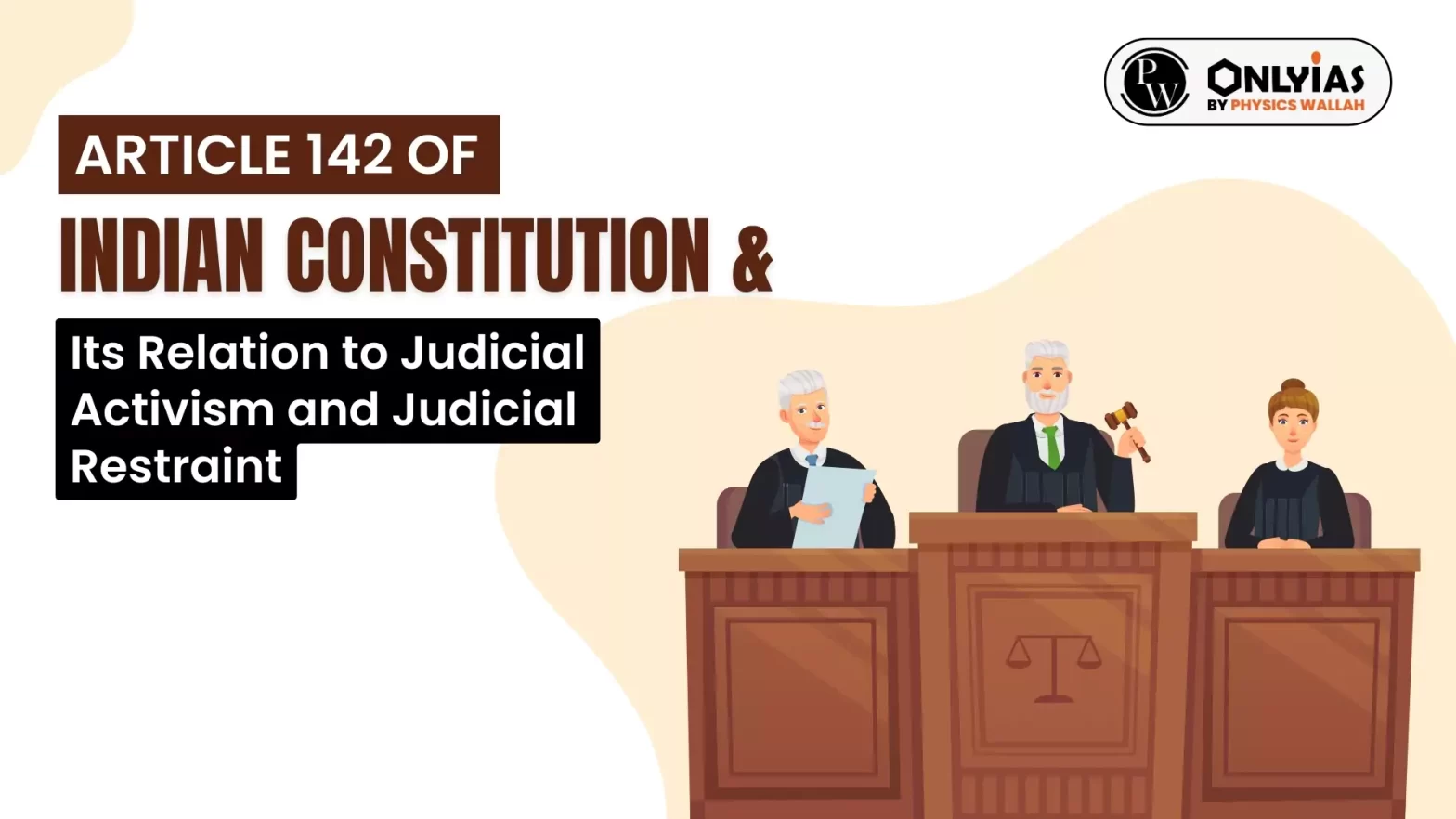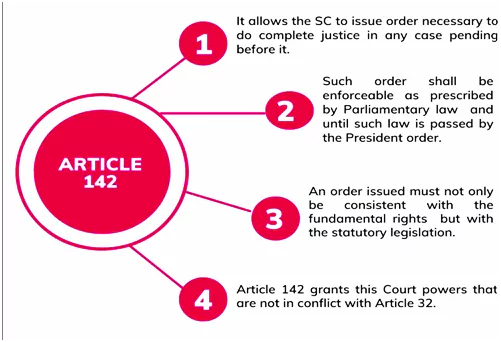Supreme Court of India invoked the powers conferred under Article 142 of Constitution for overturning the Chandigarh Mayor election results of the Chandigarh Municipal Corporation.

Recently, Supreme Court of India invoked the powers conferred under Article 142 of Constitution for overturning the Chandigarh Mayor election results of the Chandigarh Municipal Corporation.

| Judicial Review | Judicial Activism | Judicial Restraint | Judicial Overreach |
|
|
|
|
|
|
|
|
|
|
|
|
|
|
|
|
|
|
|
|
|
|
|
|
Article 142 remains a testament to the Indian judiciary’s commitment to ensuring justice in its fullest sense. Its judicious application is key to maintaining the rule of law and democratic ethos.
| Must Read | |
| NCERT Notes For UPSC | UPSC Daily Current Affairs |
| UPSC Blogs | UPSC Daily Editorials |
| Daily Current Affairs Quiz | Daily Main Answer Writing |
| UPSC Mains Previous Year Papers | UPSC Test Series 2024 |
Article 142 of the Constitution provides this unique power.
The Kesavananda Bharati case, which established the basic structure doctrine.
It does not override laws but complements them to ensure justice.
It empowers the Court to proactively address social justice and public interest issues.
The BCCI reforms in 2016, mandating organizational transparency and accountability.

<div class="new-fform">
</div>